Reading Time: 17 Minutes
GRIN also recommends this free guide:
The Industry-Specific Approach to Influencer Marketing
Technology and COVID-19 have transformed how brands connect with consumers. One of the more interesting shifts in retail strategy is the sale and distribution of alcoholic beverages, in particular how it has affected wine marketing strategy.
Winemakers have traditionally depended on marketing events and distributors to scale their brands. But all of that is changing fast as the wine industry invests in ecommerce and social media marketing strategies.
Because wine is a luxury item, there are many different ways to combine it with other unique customer experiences.
Wine-tasting events have been the chief tactic for raising brand awareness, partnerships, and sales. These tastings occur at vineyards, as well as wine shops, conventions, and various hospitality venues.
As a pairing product, wine usually accompanies high-end dining because it can enhance the taste of sides and entrees and is often enjoyed in a relaxed environment.
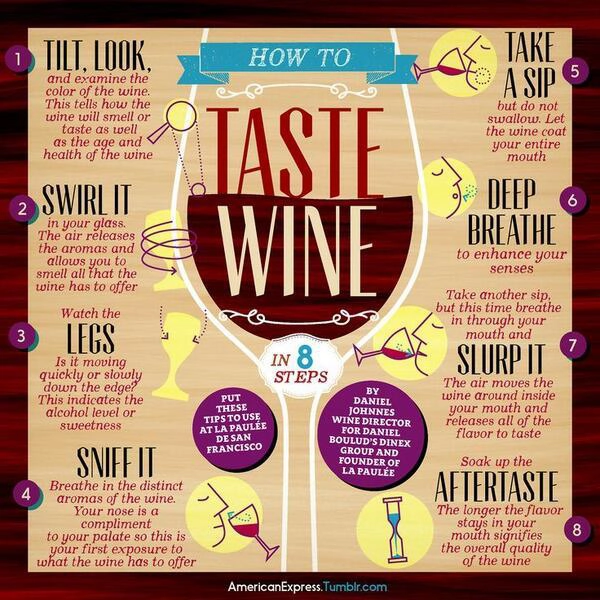
Image from The Wine Wankers
The rise of COVID-19 limited in-person events for both B2C and B2B wine sales, and traditional wine marketing tactics became suddenly ineffective. At the same time, consumer spending on luxury goods declined in 2020, putting further pressure on wine brands to change their approach.
That said, many experiential tactics are surviving the pandemic. But ecommerce and social media opportunities are giving wine brands more options on how to offset the loss of pre-pandemic “cash cow” marketing tactics with a new type of wine marketing strategy.
Not being able to attend industry events at the same frequency and scale as they did prior to 2020 has made it more difficult for buyers to discover new wine brands.
The global pandemic made it impossible for wine brands to maintain their pace for launching experiential events. Lockdowns and headcount restrictions forced most brands to cut back on their marketing budget. Many wineries simply couldn’t survive.

Image via Statista
But it wasn’t just COVID-19 restrictions that impacted wine sales – consumers are spending more carefully too. As a luxury item, wine is not essential for survival. Consumer spending trends have forced some wine brands to cut back on production, lower their prices, or both.
“Hotels were one of the first industries affected by the pandemic after travel was forced to a virtual halt in early 2020, and it will be one of the last to recover. The impact of COVID-19 on the travel industry so far has been nine times that of 9/11.”
– AHLA’s State of the Hotel Industry 2021
Wine enjoys special product placement within hospitality businesses, to include resorts, hotels, cruises, restaurants, and more. Perhaps the biggest economic impact of COVID-19 has been how it effectively brought the hospitality industry to a screeching halt.
“Amid the chaos of COVID-19, restaurants adapted because they had to. As 110,000 establishments closed permanently, the industry quickly learned that it must adapt to survive.”
– Food Safety News, 2021
Many wine brands rely heavily on these businesses to grow and survive. With the loss in cash flow from hospitality customers, wine makers are adjusting their approach to reach consumers directly at home.
Alcohol sales at local stores have remained somewhat steady through the pandemic. However, the coronavirus has made it more difficult for certain regions to ship bulk products to key distributors. These supply chain delays continue to disrupt the wine industry in 2021.
Ecommerce grants wine makers and distributors an “always on” wine marketing strategy. It also requires less overhead and offers new revenue streams. For many, an ecommerce approach to wine sales has helped them recover and grow despite the economic impact of COVID-19.
Creating an ecommerce shop is top priority. It’s not enough to have a static website. Successful ecommerce wine brands invest in interactive sites that are optimized for browsing, adding to carts/lists, and checking out.

While there is no standard “look” for online wine shops, every good ecommerce store has the following:
When making the shift to ecommerce, many brands have to adjust their inventory tracking and product fulfillment process. Customers should be able to find what they want, complete a purchase, and receive their order accurately and in a timely manner.
A major advantage of ecommerce wine sales is the brand’s ability to get to know their customers better. Most ecommerce platforms offer customer analytics that brands can use to make personalized recommendations or to send gifts that they know certain customers will love.
Additional features, such as the ability for customers to create an account, email/SMS subscriptions, etc. only increase the brand’s access to key data that will allow them to connect with customers on a deeper level. The more a wine seller knows about their audience, the more effective they will be at converting prospects into long-term customers.
Wine club memberships have been around for centuries. But thanks to ecommerce, people can join wine clubs or subscribe to memberships from anywhere in the world.
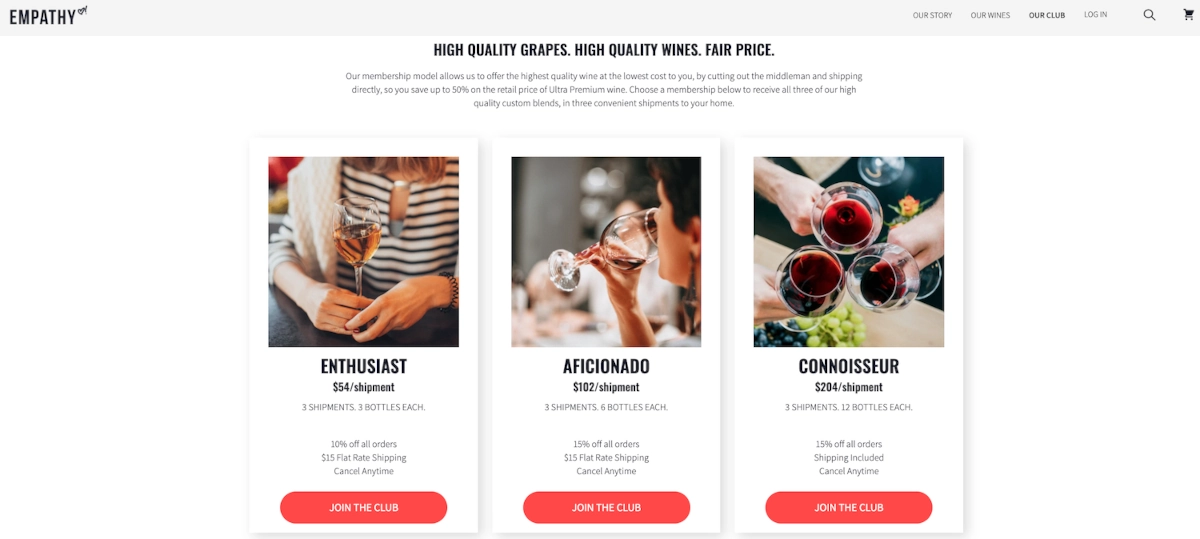
Brands can leverage their ecommerce presence to reach new markets and increase their sales volume.
Wine isn’t just a product – it is a popular hobby and lifestyle. That’s why customers are excited to learn more about the art of serving and drinking fine wine.

Many wineries and wine distributors have adopted a robust content marketing strategy to inform their audience and nurture brand communities. Content marketing can significantly increase wine brands’ inbound traffic and lower their acquisition costs.
Additionally, content marketing is one of the best ways to convert customers into long-term fans. Brand fans become outspoken advocates for their favorite wines.
Wine businesses have recently started taking advantage of email and text message marketing. For online shoppers that are new to the brand or new to the ecommerce experience, they can sign-up for product updates and plan their future purchases.
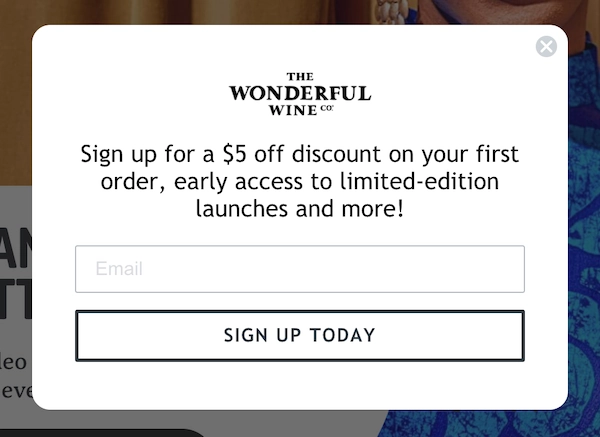
With the growth of two-way SMS messaging, many wineries are leveraging the tool to interact with customers to answer their questions or resolve conflict offline. When adhering to text message marketing compliance standards, SMS is a great way to stay in touch with prospects and customers for higher sales and lower return rates.
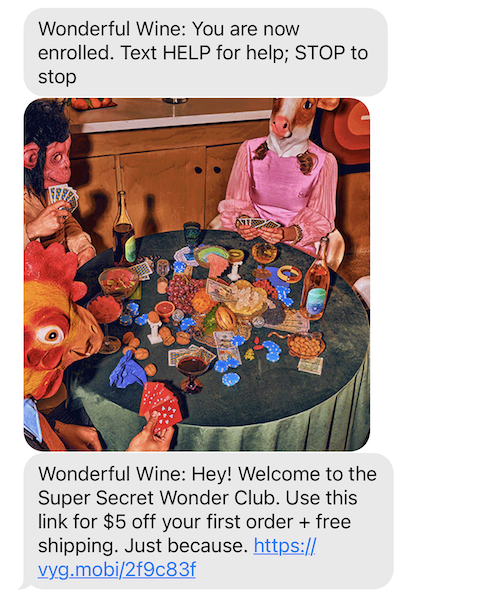
Wine has a naturally visual appeal, which makes it a great product to showcase on social media.
Many leading channels, such as Instagram, Facebook, Pinterest, and TikTok, make it simple for wine brands to nurture audiences, connect with customers, show off wine collections, and gather feedback.
Brands that make extensive use of social media also gain more digital word of mouth. Satisfied customers love to tell friends and family about a recent purchase that delighted them. Brands can also harness this word-of-mouth power to facilitate online contests/giveaways.
Influencer marketing is currently the most effective way for brands to promote themselves on social media.
Consumers trust third party recommendations over branded posts/ads. Social proof is consistent, reliable feedback from informed customers that naturally increases brand trust and loyalty among a target audience. Influencer marketing is the most efficient way to harness that social proof and acquire new customers affordably.
But influencers don’t just drive wine sales, they can also:
Whether from an influencer or outspoken customer, social media UGC can be far more effective for driving brand awareness and sales among first-time buyers. Also, repurposed UGC saves on production costs.
Many wine brands leverage UGC (with permission) on their social media pages, websites, email newsletters, and paid ads.
Like most event-based marketing, ecommerce wine brands are moving some of their wine tasting events online. These brands ship bottles ahead of the virtual event and then invite customers to join from the comfort of their own homes.
While virtual wine tastings do not offer the benefits of in-person visits, new atmospheres, etc., it does make it easier for customers to attend. Additionally, participants don’t have to worry about their blood alcohol content (BAC) in order to drive home safely.
Upon the vaccine’s release, the United States has enjoyed some return to normalcy. By accepting the vaccine and maintaining social distancing, many people are able to enjoy travel and events. This has helped some wine brands resume a portion of their experiential wine marketing strategy.
That said, there’s no denying the effectiveness of an ecommerce approach. A business model that builds a strong foundation online can easily increase or decrease its in-person tactics as it adjusts to the lingering effects of a global pandemic.
That’s why ecommerce growth in the wine industry is here to stay. Wine brands that ignore this trend are likely to continue to struggle even as the pandemic subsides.
Ecommerce sales dramatically increase a brand’s ability to know their customers. Using sales and website analytics, brands will focus on providing an amazing user experience for each of their customers.
This personalization is made possible by automation and ecommerce’s naturally lower overhead. Targeted marketing and sales increases customer retention and lifetime value.
Wine tastings and wine-food pairings are just a few of the events that moved online since the pandemic’s outbreak. Even as in-person events return to the wine industry, virtual events provide additional seats for those who prefer not to travel and can easily accommodate venue capacity restrictions.
“Businesses are also looking at greater diversification across sales channels and markets in order to spread risk more effectively. For example, around 44% of producers wanted to increase DTC sales, and around a quarter are switching to food retailing and online.”
– The Drinks Business, 2020
Ecommerce capabilities give wine makers more options when it comes to reaching customers in stores and at home. Thanks to online shopping trends, even wine brands that traditionally banked on their distributors for sales can now accelerate DTC sales simply by maintaining a fully-functioning ecommerce website and social media presence.
Among the industries that exploded during the pandemic are home delivery services. Furloughed workers could make money on the side, consumers could stay home, and brick-and-mortar businesses could stay in business.
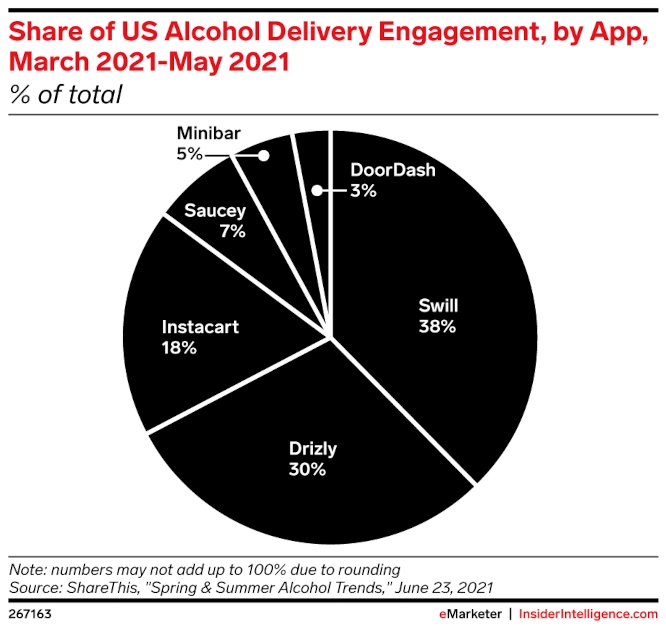
In addition to improving their own product fulfillment process, many wine brands can leverage partnerships with these food delivery companies across the country. This will make it easier for brands and consumers to do business in a post-COVID economy.
Wine will always be a luxury item, but conservative spending habits have forced many brands to develop more affordable wines.
Ecommerce capabilities naturally lower costs for wine brands. As a result, those brands can pass the savings onto their customers.
Also, increased online sales helps winemakers better understand what their customers want. That means that they can invest in producing more of what customers love, as well as develop new, less-expensive product lines that brands know their customers will love.
Wine clubs aren’t just tradition, they are widely popular and have remained so throughout the pandemic. But wine brands that promote their memberships and clubs online can expand their reach dramatically.
With a streamlined product fulfillment process, wine ecommerce is making subscription-based services more popular and effective.
Shifting to an ecommerce strategy doesn’t keep wine brands from doing what they do best – providing rich, in-person experiences.
Rather, adopting an online retail strategy “pandemic proofs” the wine industry and creates opportunities where there once were known. More importantly, maintaining an ecommerce store makes it easier for wine brands to connect with customers on social media. These brand-consumer connections create authentic relationships that drive vibrant word-of-mouth.
Stop wondering whether your brand is making an impact with customers online. Manage influential customer relationships in just a few clicks with GRIN today.
Our team keeps a finger on the pulse, so you’re always working with the latest information.